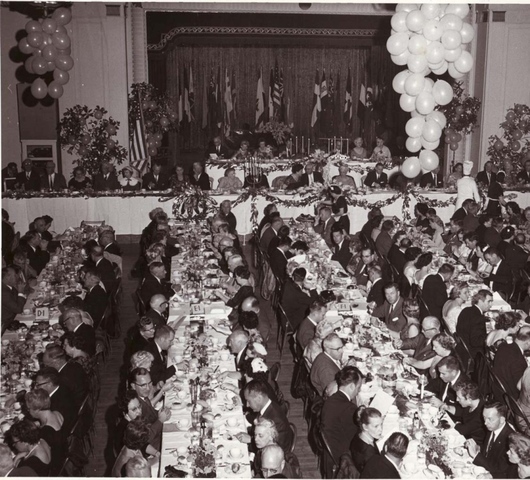
Good Morning POU!
From the book “Miss Anne in Harlem”:
Almost all histories of the Harlem Renaissance begin with two of the first literary celebrations to bring together Harlem intellectuals and white publishers, editors, and philanthropists: the Civic Club and Opportunity awards dinners of 1924 and 1925 sponsored by Opportunity magazine, the National Urban League’s journal.
The Civic Club dinner on March 21, 1924, connected the cream of New York’s literati to the Harlem Renaissance’s advance guard, creating interracial networks the movement would depend on for years to come. As Opportunity reported, it was a chance “for many of the contestants to meet in person many of those who were making American literature.” The evening was a fantastic success, providing whites with a wealth of cultural material and blacks with needed social resources. In fact, the Civic Club dinner became so legendary that it soon proved necessary to host a second, larger dinner, on May 1, 1925.

Taking place downtown in the Fifth Avenue Restaurant, this was the premier interracial cultural event of the year. It was “a novel sight,” according to the New York Herald Tribune , with “white critics whom everybody knows, Negro writers whom nobody knew—meeting on common ground.” “Novel” it may have been. But in almost every other way, the Herald ’s reporter missed the mark. The gathering in those white, gold, and mirrored rooms was not Old New York’s hidebound version of Who’s Who. This was a new social order, one in which the “Negro writers” were well known indeed. They were the reason Greenwich Village, Midtown publishing, and uptown university types were there. Harlem was already “hot.”
“Common ground” was not equal ground, however. Of the nearly two dozen contest judges, eighteen were white, as were all the section heads for each competing literary genre. The dinner was free for most of the white attendees, who were designated as “honorary” invitees. But black attendees, or “supporting” guests, as they were called, were charged handsomely for their chicken, mashed potatoes, and peas. One black award winner, Brenda Ray Moryck (a granddaughter of the editor of The Colored American , the most important antebellum weekly in the nation), reflected on the “paradox” of treating whites as experts on black culture when “colored people always have known [more about whites] and always will . . . than they will ever know about the black race.”
The dozens of white women who attended that night were as divergent a lot as those who published their pieces on “The Poet’s Page.” Some were primitivists, such as Edna Barrett and the writer and translator Edna Worthley Underwood, who thought black people were “a new race differently endowed” that could help restore white culture and art “because joy—its mainspring—is dying so rapidly in the Great Caucasian Race.” Others were activists squirming in their high-backed chairs whenever such things were said. Some came looking for friends or collaborators. Others sought the thrill of being rebels. Many came to escape the social conventions that awaited them at home: lectures, calling cards, concerts, and whist. Most wanted to be members of something meaningful, to be part of a group. Some may have shared the hopes of a white woman named Sarah N. Gelhorn, who wrote in to the radical black weekly Chicago Defender , “I have sometimes dreamed of a band of justice-loving white women.” When journalists bothered to mention the white women of Harlem, which was not often, they tended to lump them together, assuming that all of them were motivated by prurient sexual or primitivist sentiments. That created friction between the women that often led them to avoid one another.

Most of the white women who went to Harlem did so with limited cultural capital. Their funds were rarely their own, siphoned, sometimes surreptitiously, from their fathers or husbands. Whether as hostesses, patrons, comrades, lovers, writers, or—most intriguingly—as white women passing for black (fooling not one black person), these women went to Harlem to participate in its renaissance, often with the pioneering notion that they could “volunteer” for blackness. By making themselves socially unintelligible and courting ostracism, they confounded available categories and introduced many of our own critical ideas about the flexibility or “play” of social identity, often with unhappy outcomes.
Whatever their intentions, these women were precursors of some of our most cherished nostrums. All of them used race to expand the cultural roles available to them as women. As an NAACP official, Mary White Ovington, born in 1865, could travel, and she spent a great deal of time in the rural South, staying in black people’s homes and speaking at black churches. Among her close friends she counted both W.E.B. Du Bois and James Weldon Johnson, two of the most intriguing and expansive intellectuals of the century. She was the author of two plays, a major sociological study of race, two autobiographies, three children’s books, a group biography of black America, and an important, innovative novel about passing called The Shadow. She could also give public speeches.
In Harlem, Ovington noted, “I did what I wanted to.”

